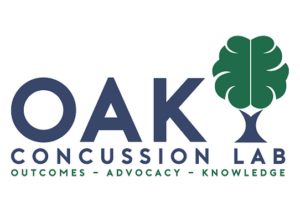Tell us more about yourself and the author team
I am a kinesiologist by training. Kinesiologists are healthcare professionals who apply principles of exercise science in the assessment and rehabilitation of human movement, health promotion, and healthy lifestyle management. I am specifically interested in active rehabilitation approaches for concussion and health technology innovation. This study was part of my master’s research in the Rehabilitation Sciences Institute and OAK Concussion Lab at the University of Toronto. The OAK Concussion Lab conducts research related to concussion outcomes, advocacy, and knowledge. You can learn more about our research at https://oakconcussionlab.weebly.com/. My research supervisors, Dr. Nick Reed and Dr. Anne Hunt are faculty members in the Department of Occupational Science and Occupational Therapy at the University of Toronto and adjunct scientists within the Bloorview Research Institute at Holland Bloorview Kids Rehabilitation Hospital. As occupational therapists, they are dedicated to supporting youth to do the things they need, want and love to do in their lives. This research was also supported by Dr. Emily Nalder, Assistant Professor in the Department of Occupational Science and Occupational Therapy and Dr. Michael Hutchison, Associate Professor in the Faculty of Kinesiology and Physical Education at the University of Toronto.

What is the story behind your study?
Our team has contributed to research demonstrating the benefits of an active rehabilitation approach for adolescents with concussion involving subsymtom threshold exercise (i.e., below the level that produces symptom provocation) combined with education and support for returning to activity. Research conducted by our group and others has shown that active rehabilitation improves recovery for adolescents with concussion by reducing symptoms, improving mood, and facilitating engagement in meaningful activity. This type of active rehabilitation program has typically been delivered via weekly in-person appointments for re-assessment and program progression. Unfortunately, many families have difficulty attending in-person sessions due to a lack of specialty services in their region and financial or logistical challenges preventing parental accompaniment. This led us to explore the feasibility of a remotely delivered “Tele-Active Rehabilitation” intervention. Our hope is that this approach could help enable access to care that supports recovery and return to activity among adolescents with concussion.
In your own words, what did you find?
Among our small sample of adolescents, we found that the Tele-Active Rehabilitation intervention was a safe and feasible approach. We looked at several metrics that indicated the intervention was feasible, including adherence to the program, usability of the telehealth platform, and adolescent and parent satisfaction with the program. We also found that the adolescents who participated in the program reported reductions in post-concussion symptoms, more positive injury perceptions (how they think and feel about their injury) and improvements in perceived occupational performance (a measure of performance in everyday activities) compared to before they started the program. These are promising results which we believe to support further study of the Tele-Active Rehabilitation intervention and other telehealth interventions for pediatric concussion.
What was the main challenge you faced in your study?
Recruiting participants for a research study is always a challenge. Our study took place during the early stages of the COVID-19 pandemic (May 2020–March 2021) when lockdown measures in our jurisdiction included school closures and sports cancellations, which likely impacted recruitment for our study due to fewer opportunities for injury. Although we ended up with a smaller sample size than originally anticipated, we are pleased that our results are similar to previous studies of in-person active rehabilitation programs, and we believe this initial study provides important preliminary evidence to guide the design of future larger studies.
If there is one take home message from your study, what would that be?
We would like readers to know that telehealth is emerging as a viable option for concussion rehabilitation, which may be particularly beneficial for people who are unable to attend regular in-person sessions. Results from our study and work from other groups highlight the potential for telehealth approaches that support adolescents with concussion to safely monitor and progress exercise in the home environment. We would also like to emphasize the importance of looking beyond only symptoms to also assess how concussion is affecting an adolescent’s ability to participate in meaningful activity. Understanding their ongoing symptoms and resulting activity limitations is key to tailoring a comprehensive active rehabilitation approach that involves both exercise and tailored recovery strategies to help adolescents get better quicker and return to the activities that are important to them.